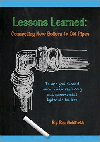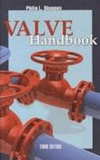Manufacturers Said To Be Coming Back
What is causing this reverse migration? Sources within these companies report they can beat current Chinese prices with efficiencies they can achieve in developed countries. Wise employers, who measure and monitor their costs - tangible and intangible - are discovering that it's more cost-efficient to keep the jobs at home. Assumptions that it is cheaper to manufacture overseas have been exposed as more myth than reality.
We have learned about companies returning their manufacturing to the United States from Taiwan, Turkey, India, China, and other low-cost production countries. The anecdotal intelligence we have received is reinforced by Richard Martin, International Market Assessment (IMA) Asia. His company services over 700 clients across 14 countries in Asia. In mid-June, his team met with clients around the region to examine Asia's manufacturing outlook.
In early July, as results of his firm's research were compiled, Martin delivered a presentation to the Lowy Institute for International Policy in Sydney. (www.lowyinstitute.org) He argued that “the restructuring of Asian manufacturing now appears to be moving into a new stage, one characterized by fast-rising costs in China as well as a drive into areas of higher value-added production.”
Martin contends “this second phase could see a reversal in the winners and losers that were created by China's first shock wave of ultra-low cost manufactured goods from 2000.” In an effort to compete with manufacturers in the United States and other developed countries like Australia, New Zealand and the United Kingdom, China is rapidly upgrading its technology. These improvements have great potential to increase productivity, but usually require new facilities and fewer employees.
Both requirements clash with current Chinese culture and policies. Many construction projects are already prioritized, drawing equipment, materials, and labor. New processes require fewer workers, with greater skills, generating new demands for training and putting more people out of work.
From 'The Herman Trend Alert,” by Roger Herman and Joyce Gioia, Strategic Business Futurists. (800) 227-3566 or http://www.hermangroup.com. The Herman Trend Alert is a trademark of The Herman Group of Companies Inc.
Links
Looking for a reprint of this article?
From high-res PDFs to custom plaques, order your copy today!





